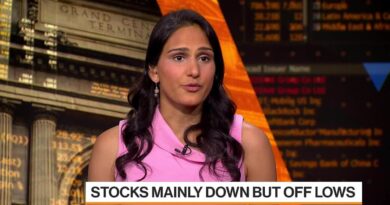Prices Of Some BYD Cars In Export Markets Are Double Or Triple Prices In China

Sign up for daily news updates from CleanTechnica on email. Or follow us on Google News!
Manufacturing electric cars in China is like participating in a circular firing squad. The competition is so fierce that companies are selling many cars almost at cost — or below. It goes without saying you can’t buy apples for 25 cents each, sell them five for a dollar, and expect to make a profit. BYD has slashed prices in the home market for many of its domestic models in order to compete for market share, but the result has been its weakest quarterly profit growth since 2022 while its revenue growth slowed to the lowest level in nearly four years, according to Reuters. Auto companies in China are expected to launch 110 new EV and plug-in hybrid models in China this year, which will fuel more competition and more price cuts.
With a portfolio of different models at a variety of price points, BYD has ramped up efforts to move upmarket while doubling down on discounts to vie for cautious consumers amid a sputtering economic recovery. The company unveiled the U7, its third ultra-luxury model under the Yangwang brand, at the Beijing auto show this week. The push to sell more expensive up-market models coincides with a protracted and intensified price war in China that has seen BYD slash prices since February by up to 20%. In a recent research note, Goldman Sachs forecast lower profits for electric vehicles made in China this year compared with 2023 and said it was possible the industry’s profitability could turn negative if there are further price cuts.
BYD — Export Or Perish
BYD thinks it has the answer. Don’t sell those cars in China. Ship them to other countries and double or triple the sales price. Voila! Instant profits. Reuters recently reviewed pricing data published by BYD for its dealers for three models — the Dolphin and Seal sedans and the Atto 3 SUV — in five of its leading export markets — Germany, Brazil, Israel, Australia, and Thailand (the Seal is not available in Israel). It discovered the company is selling those cars for much more money abroad that it does in its home markets. The starting price for the BYD Atto 3 ranged from 81% to 174% higher overseas than it is in China. Dolphin prices ranged from 39% to 178% higher, and Seal prices from 30% to 136% higher.
In China, the mid-range version of the BYD Atto 3 sells for $19,283. In Germany, it is priced at $42,789 — a price that’s still competitive with comparable electric vehicles in German market. BYD did not respond to a request for comment from Reuters, but its chairman, Wang Chuangfu, told investors in a private meeting in March that BYD expects exports to help shore up profitability this year as a domestic price war weighs on its margins.
It’s common for automakers to charge slightly different prices for exports of the same or similar versions of a vehicle. But the sheer size of the price increase BYD charges in export markets is rare, Sam Fiorani, vice president of global forecasting at AutoForecast Solutions told Reuters. “Globally marketed vehicles are usually priced in a narrow range,” he said.
BYD Leveraging Its Cost Advantage
BYD’s big export markups also underscore the massive cost advantages that China’s EV industry has over foreign competitors. BYD has squeezed costs from every stage of production, from raw materials, to batteries, to land, and labor, according to experts on China’s auto industry and battery cost data provided to Reuters. That cost advantage has foreign competitors nervous. Some US and European automakers are calling for higher tariffs on Chinese EVs.
Hiking export prices gives BYD room to generate much larger profits per vehicle, experts in EV manufacturing costs told Reuters, but those margins also give the automaker enormous flexibility to cut prices if needed to grab market share abroad in the those foreign markets. For now, Chinese automakers, led by BYD, are content to keep export prices high and reap the profits, said Ben Townsend, head of automotive at Thatcham Research in the UK. “They’re not looking to undercut the European market,” he said. “They are looking to make margin.”
BYD and other EV makers are also trying to shed the stigma of cheap Chinese products as they build global reputations and focus on maintaining strong resale values, said Bo Yu, Greater China country manager for UK research firm JATO Dynamics. “Chinese automakers are in a brand-development phase,” she said.
Comparing starting prices by market is complicated by regional differences in available trim levels. In some cases, entry level exported vehicles studied by Reuters had slightly better equipment than the lowest-priced model in China. In cases where direct comparisons were possible at various trim levels, BYD’s export prices typically were still much higher than in China. For instance, the closest version of the Dolphin on sale in Germany, with the same battery range, sells for $37,439 — more than double the $16,524 price tag in China. The upgraded Seal version sells for $48,139 in Germany, 59% more than its $30,317 China price.
By comparison, the Reuters analysis found that Tesla, which has a higher cost base than its Chinese rivals, sells its Chinese-made Model 3 for only 37% more in Germany than in China, according to the information available on the Tesla website. Although shipping costs are significant for cars transported by ocean-going car carriers, BYD’s large export premiums are more than enough to cover those costs and still deliver thousands of dollars in additional profit per vehicle, according to an analysis conducted for Reuters by A2MAC1, which disassembles cars for automakers to assess their competitors’ products.
Small Upgrades, Large Price Increases
It found the European Dolphin is slightly longer and has extra features, including a slightly bigger battery, a more comfortable suspension, and additional sensors. But after accounting for those upgrades, along with shipping and import taxes, A2MAC1 estimated that BYD’s profit margin on the European car was about $7,400 more than whatever it clears on the same car in China. Keep in mind that BYD is also investing in its own fleet of cargo ships to deliver its cars to foreign markets.
Reuters found that Chinese automakers often price their vehicles slightly below or slightly above legacy European rivals, while including interior and technology features that European automakers charge extra money for. The top version of the BYD Atto 3 in Germany sells for $42,789, just below the base model of the electric Opel Mokka at $43,652 but above the $41,298 starting price for a Peugeot E-2008. Sometimes BYD aims higher than its competitors. It sells an upgraded version of the Seal in Europe for 10% more than the roughly comparable Tesla Model 3. In China, the Seal is priced 6% less than the Tesla.
BYD has an advantage over legacy automakers with its vertically integrated supply chain. It makes almost all components of its cars in-house rather than farming them out to suppliers. Lowering the cost of batteries has been key. BYD and other Chinese automakers and suppliers have spent the last two decades securing access to mines around the world to lock up critical battery minerals such as lithium and cobalt, said Keith Norman, chief sustainability officer at Silicon Valley battery startup Lyten. “They own the critical-minerals part,” he said.
Market intelligence firm Benchmark Mineral Intelligence showed Reuters data that indicates the price for batteries in China is about 18% lower today than it is in Europe. A company like BYD, which makes its own batteries, can drive its costs even lower by negotiating volume discounts across the battery supply chain, said Benchmark analyst Roman Aubry.
Chinese automakers are helped by affordable land — often subsidized by local authorities — and benefit from cheaper electricity and labor. They can also build factories in China in as little as a year because they face fewer regulatory hurdles than in Western countries, according to Mark Wakefield, head of the global automotive practice at AlixPartners in New York.
The Takeaway
History can be a wonderful teacher. Not so long ago, Tesla was charging premium prices for its cars because it could. People were willing to pay whatever it took to buy one. Then less than 18 months ago, everything changed and Tesla started slashing prices in every market. One has to assume that something similar will happen to Chinese automakers who sell their electric cars abroad — eventually.
The issue for many people is the extraordinary amount of help — both direct and indirect — that Chinese manufacturers get from their government. China has virtually cornered the market for electric cars as a result. Crafting a plan to squeeze the government subsidies out of the Chinese EVs getting set to flood foreign markets will be a delicate dance. One idea may be import taxes based on the carbon impact of manufacturing. So far as we know, much of the electricity used to operate those factories in China may come from coal-fired generating stations, so other nations would be justified in imposing import duties based on the carbon emissions involved.
Or countries could simply ban Chinese cars, a move that would cause an earthquake in international trade norms and could backfire in spectacular fashion on its proponents. The fact that BYD is selling some cars for double or triple abroad suggests something is seriously out of whack here. How that chasm will be bridged is impossible to know at the present time, but it is unlikely other countries will tolerate Chinese companies making massive profits in overseas market while they are slitting each other’s throats at home for very long.
Have a tip for CleanTechnica? Want to advertise? Want to suggest a guest for our CleanTech Talk podcast? Contact us here.
Latest CleanTechnica.TV Video

Advertisement
CleanTechnica uses affiliate links. See our policy here.


